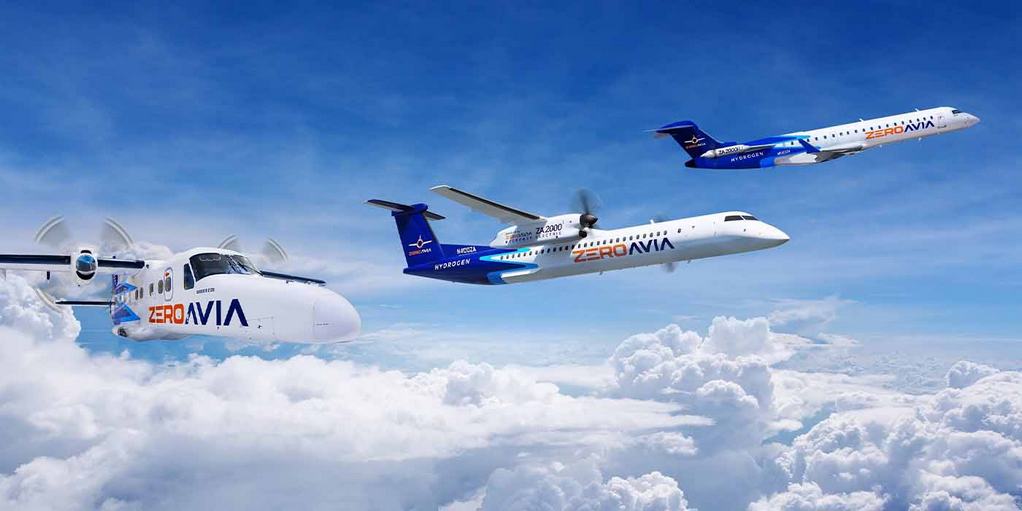ZeroAvia announced that it will be offering some of its key components designed for its hydrogen-electric engines to other clean aviation innovators.
The move allows ZeroAvia to build upon the multi-billion dollar per annum market for its hydrogen-electric powertrain family, maximizing the company’s investment in R&D and its strategy of vertical integration, as well as furthering the company’s impact on reducing environmental harm from aviation.
With the certification work for the ZA600 engine for up to 20 seat aircraft underway, and the underpinning technology for the ZA2000 engine for up to 90 seat aircraft in advanced development, ZeroAvia has conducted component market research and sees significant opportunity in the following areas:
Advanced electric motors for aviation, including a 660 kW max-power direct-drive motor capable of speeds up to 2,200 rpm, and the HyperCore 900kW modular motor capable of speeds up to 20,000 rpm.
Silicon carbide inverters – The 200kW continuous power bidirectional inverter design offers a power density above 20 kW/kg and is available in single (225kW peak / 200kW continuous) and dual (450kW peak / 400kW continuous) configurations. The inverters are designed and produced following aerospace standards, allowing a high-power density and reduced weight with advanced thermal management technologies and integration to enable reliable high performance for high altitude and engine compartment location.
Low temperature Proton Exchange Membrane (LT-PEM) fuel cell configurations (in partnership with PowerCell) – ZeroAvia’s SuperStack Flex architecture is a customizable 100-400kW fuel cell power generation platform designed to meet a range of different aerospace power, performance, and packaging requirements, while maintaining exceptional pressure, mass flow rate, humidity, and temperature control.
High temperature PEM (HT-PEM) fuel cell stacks and full power generation systems – ZeroAvia’s High-Temperature Proton Exchange Membrane (HTPEM) fuel cell stack is a turbo-air cooled modular system which offers up to 3.5 kW/kg specific power, supporting a variety of traditional aviation and VTOL applications.
Aviation fuel cell compressor is a leading-edge compressor capable of supporting up to 900kW fuel cell applications up to 15,000 feet. The compressor is designed specifically for fuel cell applications and designed for aerospace standards from the start.
The company is in active discussions on potential deals with a number of companies working on electric and hydrogen aviation innovations. More detail on the individual component lines offered by ZeroAvia can be found.
To facilitate the production of the electric propulsion systems (specifically, power electronics and electric motors) for both its own powertrains and its component offering, ZeroAvia will today open its propulsion center of excellence at Paine Field in Everett, north of Seattle. At a ribbon-cutting ceremony attended by Washington State Governor Jay Inslee, U.S. Representative Rick Larsen, and U.S. Representative Suzan DelBene, guests will get a glimpse of how the new facility will support manufacture of ZeroAvia’s world-leading electric propulsion systems for aviation in the new 136k sf facility, as well as housing ZeroAvia’s existing R&D operations at Paine Field.
ZeroAvia also plans a separate facility focused on producing hydrogen fuel cell systems – a Hydrogen Center of Excellence – and is currently exploring site selection.
Tags: Hydrogen, ZA600, ZeroAvia



Recent Posts
Scandlines Nears Delivery of Zero Emissions Ferry Following Successful Sea Trials
India faces emission roadblocks with rising net-zero demands
Green Energy Resources invests in two electric Liebherr LHM 550
NYK Launches Continuous Use of Bio LNG Fuel on Car Carriers to Advance Decarbonization Goals
Yang Ming Expands Fleet with Methanol and LNG Dual-Fuel Vessels Under Fleet Optimization Plan
ClassNK Advocates Speed Gap Monitoring to Optimize Fuel Efficiency in Heavy Weather
Wärtsilä’s retrofit package for the Corsica Linea ferry Pascal Paoli has resulted in fuel savings of up to 22 percent Corsica Linea
COSCO Shipping Names Second Methanol Dual-Fuel Containership in Yangzhou